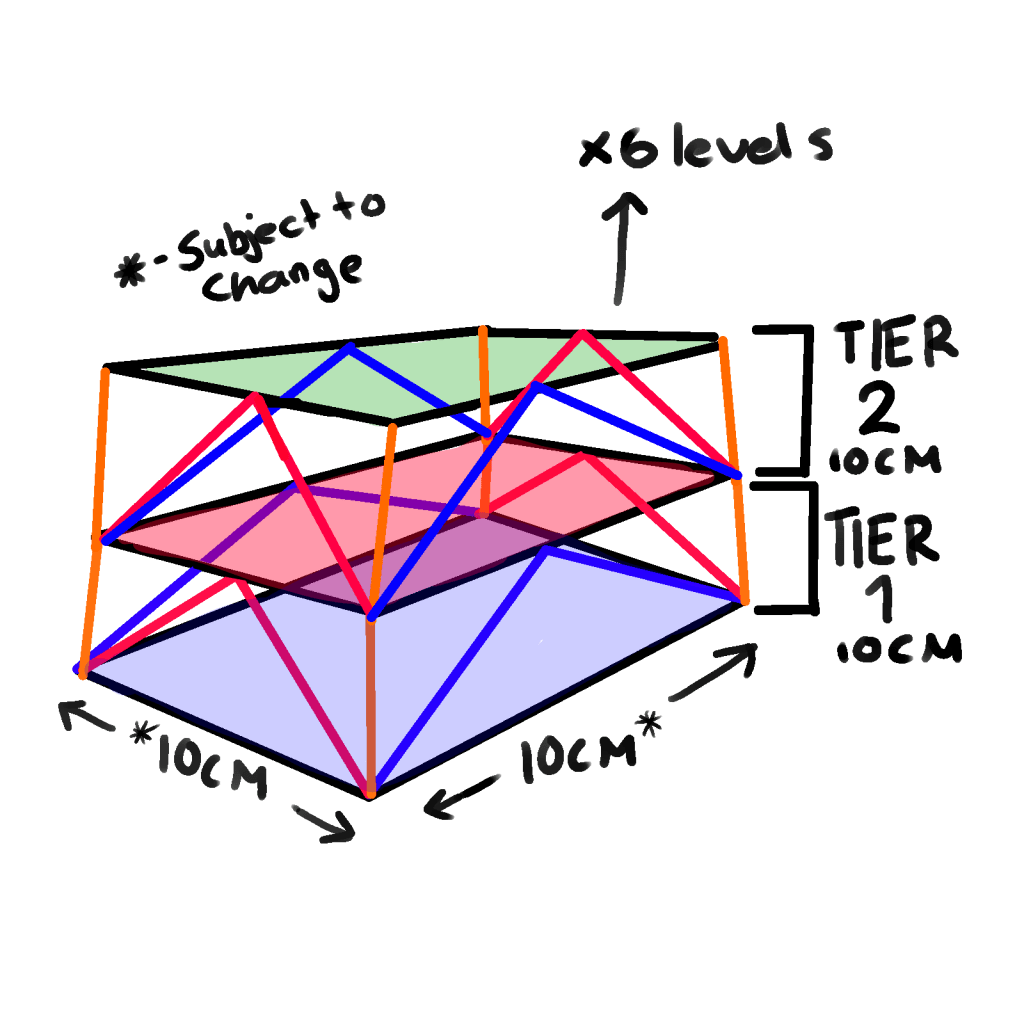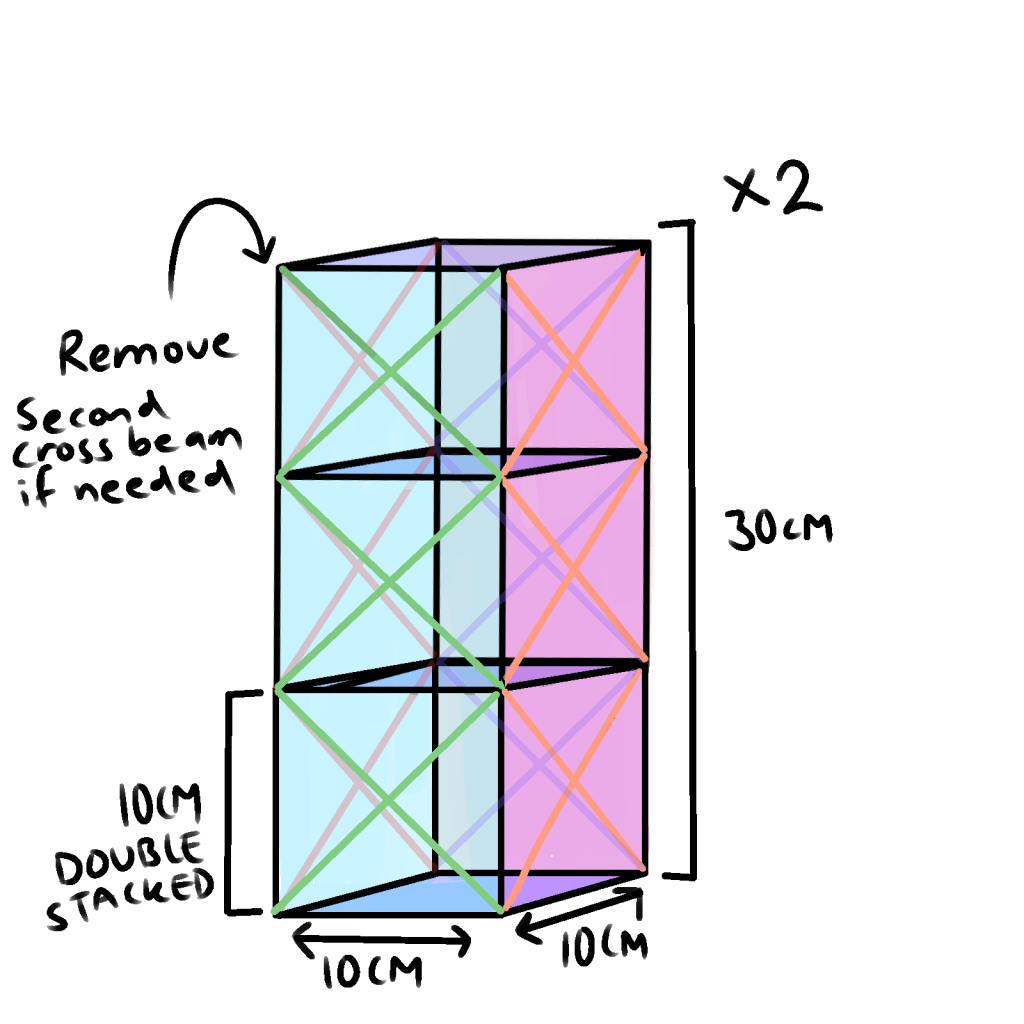
Earthquakes are catastrophic natural disasters which have devastating effects on both people and infrastructure. Over time, builders have slowly started to develop ways of preventing damage and loss of life caused by earthquakes. Our main inspirations for this project were cardboard structures that are built with majorly cardboard but can still stand amazingly strong
We were instructed to creature a scale model of a building made from pasta and Blu Tack that followed the following criteria:
- quick and easy to assemble
- has a minimum height of 60 cm
- has a maximum base of 30 cm x 30 cm
- remains standing after an earthquake, as simulated by shaking a table for 10 seconds
- is constructed from the materials supplied by your teacher
- costs less than $60 to build, given the material costs listed below
We were given a “budget” and limited materials to work with, which helped to simulate scarcity in the real world when it comes to building safe structures.
- spaghetti ($1 per 10 cm)
- Blu Tack or plasticine ($1 per gram)

We first starting with brainstorming structure shapes/ideas and researching different techniques we could utilize in our building design. Our main techniques we decided on was to double stack pasta and have each person build a tier of the building that we can attach all together at the end.
The triangle has been proven to be the strongest shape, especially when it comes to engineering. It can hold it shape and is consistent of a string base and support. We can say triangles are the strongest shape because of how it handles load/pressure. When load is applied to a point of a triangle, it’s distributed down the adjacent sides which causes them to compress, and the bottom side to be stretched, which all evenly distributes the pressure. We can also use this to say that it’s impossible to collapse a triangle without breaking one of its sides.



Looking at the first design concept compared to the one made after building the model, there are obvious flaws with how it was drawn out, which most likely lead to the failure of our first test. The main problems I would say would be the inaccuracy of how the first drawing was done in comparison to its measurements. We’re looking into making the different tiers actually box shaped, and using remaining pasta (if we have any) to make cross supports along the sides to make triangles in comparison to us previously wanting to double layer/stack pasta, as we had already used half out pasta on the previous first layer.


While we did encounter a few bumps and ultimately almost had our tower destroyed due to people touching, I will say the general concept and what we had in mind was pretty good!